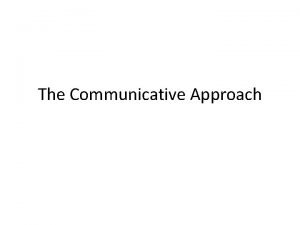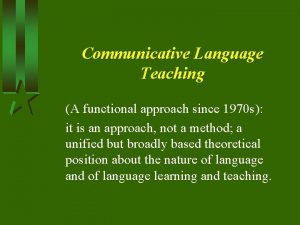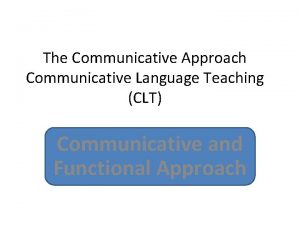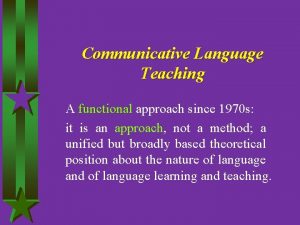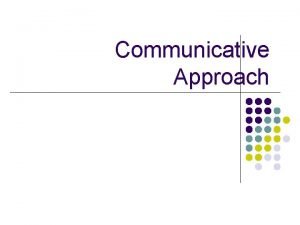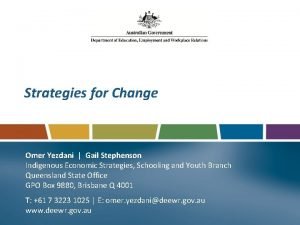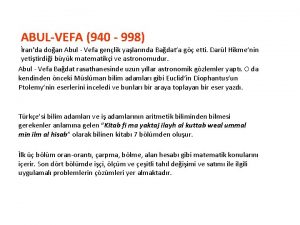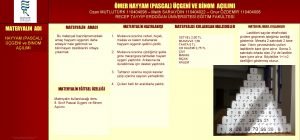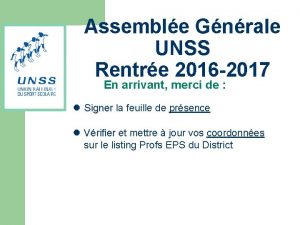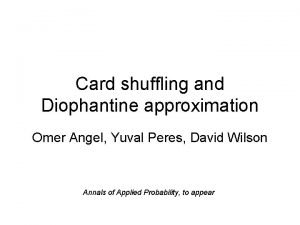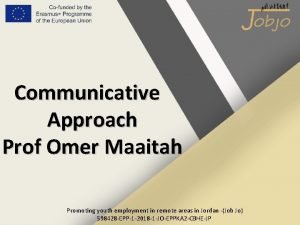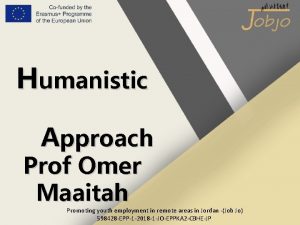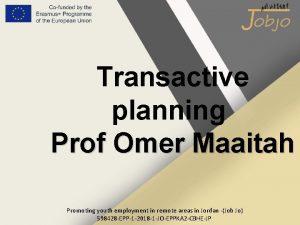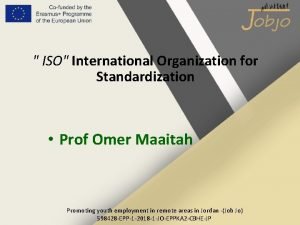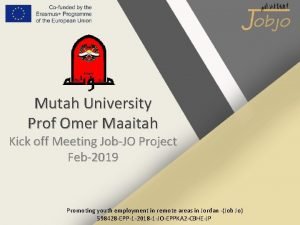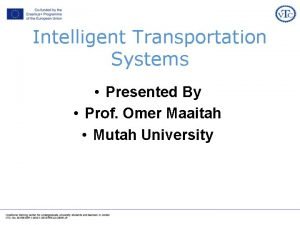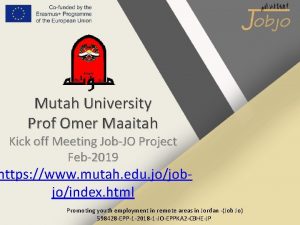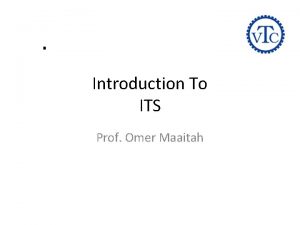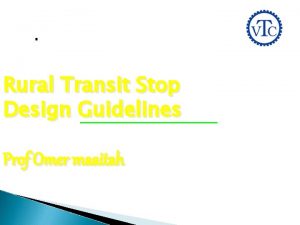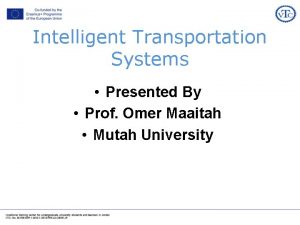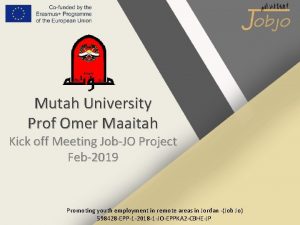Communicative Approach 2 Prof Omer Maaitah Promoting youth













- Slides: 13

Communicative Approach 2 Prof Omer Maaitah Promoting youth employment in remote areas in Jordan -(Job Jo) 598428 -EPP-1 -2018 -1 -JO-EPPKA 2 -CBHE-JP

Problem statement the urban life style , the valuable issues and the low social interaction which have been generated from exploded population and diversity in the attitudes (the general well being of Sakan Kareem is weak). Scope Enhance the quality of life (livability). Theme Upgrading and creating communal spaces.

Liveability Humanist streets & open spaces are domesticated and become liveable places for people. “ Open spaces and streets should be places and not corridors or balconies. " Humanistic approach A Humanist or phenomenological theory of planning stresses the unique ways that different groups come to possess knowledge, and the difficulty with which one group’s knowledge can be translated for others given the diversity of human daily experiences, perspectives and behavior.

Framework Human behaviour relations human Open spaces concept context relations Environment

Experience SPACE Meaning Ability to be safe Ability to make change Activities PLACE Place Physical Attributes Conception

WHAT IS PLACEMAKING • Place making inspires people to collectively reimagine and reinvent public spaces as the heart of every community. • Strengthening the connection between people and the places they share, place making refers to a collaborative process by which we can shape our public realm in order to maximize shared value. • place making facilitates creative patterns of use, paying particular attention to the physical, cultural, and social identities that define a place and support its ongoing evolution. • This approach pays attention to the opinions of the people living in a particular place and to discover their needs from this place and their aspirations towards it.

PRINCIPALS OF PLACEMAKING 1. IDENTITY: make innovation visible and public. 2. DIVERSITY: mix innovation with a range of other uses. 3. CONTINUITY: start with existing people and places. 4. SOCIABILITY: refers to the ability of a certain place to attract friends and neighbors to meet and sit together. 5. MOBILITY: connect to regions through multiple transportation modes. 6. FLEXIBILITY: experiment, observe, repeat. 7. UNITY: govern with vision and holistic, inclusive strategies 8. ACCESS & LINKAGES: Accessible place refers to how it’s available and easy to get to and get through the place, the availability of transportations to the place’s location, and the connection between the place and adjacent buildings. 9. COMFORT & IMAGE: A comfortable place makes a good impression for its visitors. With a beautiful image, safety, cleanliness and the availability of seats, comes a memorable impression. 10. USES & ACTIVITIES: Activities in a certain place attracts people to visit and to return back. A good place offers equality between men and women of different


So cu cia ltu l & re & Ac tiv e Housing &Built environment y om on Ec g in riv Th Equity t en m n iro v En Fair for everyone lly a t n e e m n itiv o ir ens v En s Well served PLACE MAKING service Well designed & built ed ct ne on Governance lc t& el or ity W sp tiv an ec Tr nn co Sa fe Well run

PUBLIC OPEN SPACES Social value • Improve quality of • life. • Increased both real • and perceived security and safety. • • Promoted social equality and stability. • Increased cultural vitality. Environmental value Economic value Reduced pollution • Increased economic vitality. (air, noise, water). Increased ecological • Reduce public expenditure on diversity. urban management. Reduced energy • Higher property consumption. prices. • Attracted capital. • Increased business

Places to sit: Primary and secondary sitting places

open spaces open space is any usable space that's open to the public space is “ the life between buildings ” together with such basic qualities as: “presence of other people, activities, events, inspiration, and stimulation” It is essential to freedom of movement, quality of life, health and social connection in a city. public space for play, activities, exercise, arts and music, community connection, conversation, family activities, personal reflection and getting fresh air, sun and a sense of natural connection. 12

Reflect s the local Social space culture Promotes community involvement Promotes human contact Open Spaces high Sense of place Social activities
 The communicative approach
The communicative approach Communicative language teaching
Communicative language teaching Clt activities examples
Clt activities examples Functional approach in language teaching
Functional approach in language teaching Communicative language teaching goals
Communicative language teaching goals Omer yezdani
Omer yezdani ömer hayyam ın yaptığı çalışmalar
ömer hayyam ın yaptığı çalışmalar ömer hayyam binom açılımı
ömer hayyam binom açılımı Aisha omer
Aisha omer şehit ömer halisdemir anadolu lisesi obp puanı
şehit ömer halisdemir anadolu lisesi obp puanı D and r defter
D and r defter Unssstomer
Unssstomer Omer angel
Omer angel Ankara yeminli mali müşavirler odası
Ankara yeminli mali müşavirler odası
